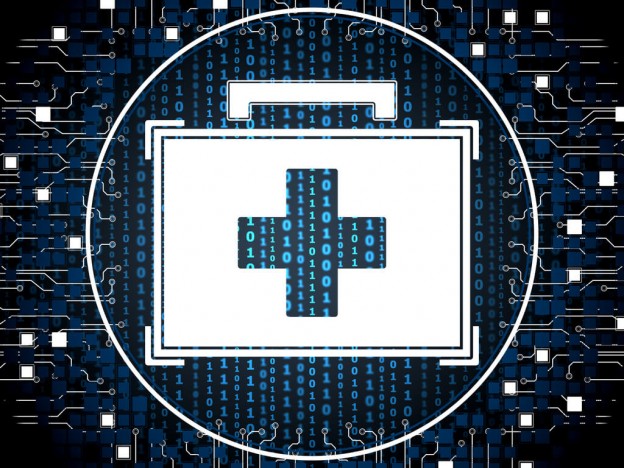In today’s world, big data analytics has permeated into almost all sectors which require large amount of data storage and transfer. There’s an increasing demand for big data in the healthcare sector too worldwide.
According to a McKinsey report, “After more than 20 years of steady increases, healthcare expenses now represent 17.6 percent of GDP —nearly $600 billion more than the expected benchmark for a nation of the United States’ size and wealth.” In other words, the costs incurred by the patients as well as the healthcare providers are higher than it should be and has been increasing for the last two decades. Hence, there is an urgent need of a smart, data-driven solution in this area. This is where big data comes in.
From managing patient data, to tracking finances of the organization; big data has disrupted the traditional healthcare scenario in a matter of a decade. Apart from this, big data is also helping in making smart decisions when it comes to diagnosis, where the most appropriate option of treatment can be analyzed quickly.
With its ability to analyze trends and patterns from various sources, hospital management software offers clearer insight and accessibility which are required to provide better care for the patients, and better data management.
Benefits of Data Analytics
With the help of data analytics, medical practitioners can collect data and convert it into useful insights that can be integrated into strategic and timely decisions. Professionals in the healthcare industry can also implement big data analysis to reduce cost and improve efficiency.
Here are some ways how database management and data analytics can assist healthcare professionals to deliver better insights for patient care:
-
Advance Patient Care
Big data analytics helps medical practitioners and administrators bridge the gap between technology and technique. With the help of all the data available on a single platform, the time taken in decision-making during critical situations such as emergencies can be reduced considerably. This helps in a more customized treatment of individual patients according to their specific cases.
With the help of analytical tools, they can expedite the automation process and convert the insights provided by the system into fruitful conversions. Healthcare Institutions such as hospitals and clinics using data analytics can monitor specific metrics such as hand hygiene compliance, Hospital Standardized Mortality Ratio (HSMR), wait times and patient satisfaction.
Medical and healthcare institutions are also integrating specific tools such as Computerized Physician Order Entry (CPOE) and Electronic Medical Records (EMRs) within their data analytics and storage systems for a more automated and streamlined process.
-
Real-Time Monitoring and Alerting
With the help of tools provided by data analytics, doctors can proactively monitor a patient’s responses and vital signs. It can then be used to send alerts instantly with the concerned people in case of an emergency or immediate medical attention. Medical staff and specialists can then immediately intervene and use the data to stabilize patients and save their lives.
For instance, if there is a change in a patient’s heartbeat or breathing, a real-time notification will be immediately sent to the concerned medial professional who can then immediately take preventive actions to normalize the patient.
-
Reduced Patient Treatment Cost
Prescriptive analytics of any medical case can also help analyze case-specific treatment costs. As a result, healthcare units can allocate medical assistance and resources in an efficient manner to maximize competence and minimize wastage. With the help of data analysis, the management can calculate the cost of specific diseases to the health care industry and prepare an overall estimate. According to a forecast by Accenture management consulting firm, artificial intelligence and big data analytics will help reduce operational costs by $150 billion by 2026.
Non-medical costs associated with the illness are sometimes included as well. Examples of medical costs are inpatient visits, emergency department visits, outpatient visits, prescription drugs, medical equipment, and home health services.”
With data analytics, these costs estimates can be predicted before the treatment to get a clear idea of the treatment’s costs to get loans, reimbursement and insurance.
-
Quality improvement and Algorithm Analysis
With the help of data analytics, metrics such as time-series analysis can be deployed to mark relevant patterns in the administration and predict the outcomes, such as staff distribution and frequency of patient admission.
With the help of accurate algorithms, prediction of admission and discharge trends can be done. This data can be extremely vital for the allocation of the medical staff, beds and inventory. Data analytics can also help plan the staff schedule for better management and functioning.
-
Electronic Health Records
Through the implementation of data analytics in electronic medical records, physicians and medical practitioners can update and implement changes without paperwork. With the help of big data, patients can access the information and insights about the course of their treatment while medical professionals can evaluate the steps that need to be taken. At the same time, big data also helps administrators evaluate costs of a particular treatment.
One of the upcoming trends is of electronic medical records facilities use regularly. This system helps eliminate the need of getting physical reports, as everything is accessible online. For instance, EMR tools store and process millions of patients’ health records, and help in imaging, whole genome sequencing, along with collating societal and publicly available data in the ever-expanding digital healthcare database.
-
Predictive Risk Analysis
Perhaps the largest costs incurred by the healthcare industry is in the treatment of long-lasting diseases. In these cases, predictive data analytics can cut down treatment costs by studying the history of the patients and predicting which cases need early intervention before problems could escalate.
Outcome prediction can be done with predictive risk analysis to avoid the chances of re-admission of patients with chronic illness like diabetes, heart ailments. Also, risk analysis through big data can help take necessary steps to prevent the outcome of any chronic disease in patients, who are prone to it. The objective of predictive risk analysis is to take actions in such a manner, that undesired outcomes such as chronic conditions can be avoided.
To Sum Up
In conclusion, healthcare institutions must implement data analytics, which is designed for risk management by considering for the medical conditions that specific cases might have. Through aggregation and analysis of data, the industry can become more efficient in resource allocation, enabling by intervention in high-risk situations beforehand and preventing systemic costs considerably.
Author Bio: Anurag Vats is an in-house writer at TechJockey who is fond of exploring the latest avenues in the field of technology and gadgets. An avid reader of fiction and poetry, he also likes to dabble with brushes and poetry, and loves to cook in borrowed kitchens.


